Standards Worldwide
Standards Worldwide
Phone +49 30 58885700-07

Standard [CURRENT]
ASTM E 1696:2015
Standard Test Method for Field Measurement of Raised Retroreflective Pavement Markers Using a Portable Retroreflectometer
- Publication date
- 2015 reapproved: 2022
- Original language
- English
- Pages
- 4
- Note
- The publisher recommends this document in lieu of the withdrawn document ASTM E 1696:2004 , for which no replacement is available.
- Publication date
- 2015 reapproved: 2022
- Original language
- English
- Pages
- 4
- Note
- The publisher recommends this document in lieu of the withdrawn document ASTM E 1696:2004 , for which no replacement is available.
- DOI
- https://dx.doi.org/10.1520/E1696-15R22
Product information on this site:
Quick delivery via download or delivery service
Buy securely with a credit card or pay upon receipt of invoice
All transactions are encrypted
Short description
1.1 This test method covers the measurement of the retroreflective properties of raised retroreflective pavement markers at a prescribed geometry, by means of a portable retroreflectometer that can be used in the field. The measurements can be compared to minimum requirements to determine the need for replacement. 1.2 The observation angle specified for retroreflectometers in this test method is that currently specified for raised pavement markers in the United States and may differ from the angles used elsewhere. For other jurisdictions, replace the observations angle specified herein with the observation angle specified by the pertinent agency. 1.3 This test method is intended to be used for field measurement of raised retroreflective pavement markers but may also be used to measure the performance of new markers before they are placed in the field. 1.4 This test method covers measurements of raised pavement markers mounted on a road surface or mounted in snow-plowable metal castings. 1.5 The values stated in SI units are to be regarded as the standard. The values given in parentheses are for information only. 1.6 The standard does not purport to address all of the safety concerns, if any, associated with its use. It is the responsibility of the user of this standard to establish appropriate safety and health practices and determine the applicability of regulatory limitations prior to use
ICS
93.080.20
DOI
https://dx.doi.org/10.1520/E1696-15R22
Also available in
Loading recommended items...
Loading recommended items...
Loading recommended items...
Loading recommended items...
